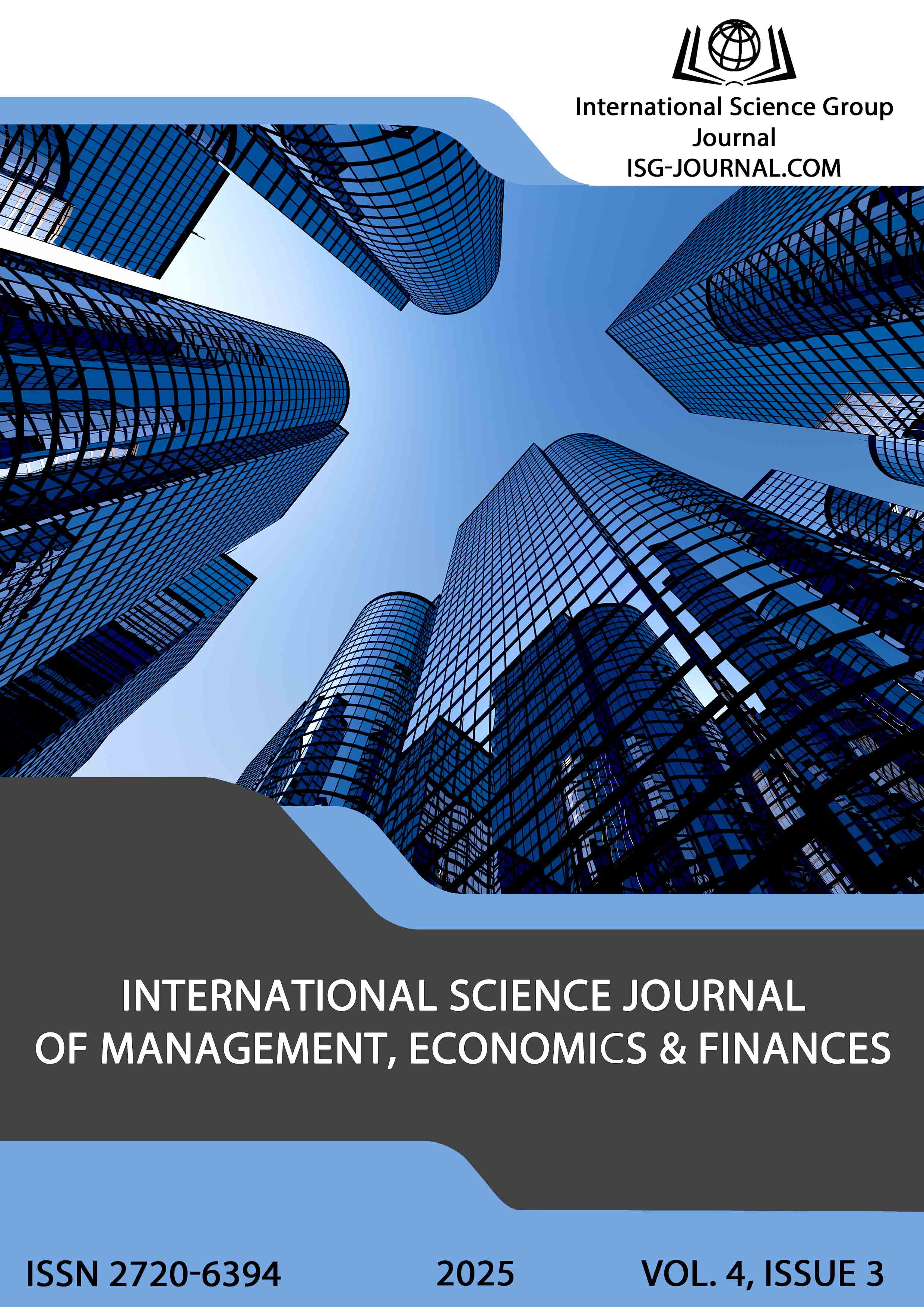The Role of Information and Its Asymmetry in Conditions of Uncertainty in Financial Instrument Markets
DOI:
https://doi.org/10.46299/j.isjmef.20250403.01Keywords:
information, asymmetry, uncertainty, financial instruments, market, volatility, liquidityAbstract
This article addresses the topical issue of researching the role of information and its asymmetry in conditions of increasing uncertainty in modern financial instrument markets. Emphasis is placed on the fact that uncertainty is a fundamental characteristic of the economic space of the 21st century, largely due to the uneven distribution of information among market participants. Two key types of information asymmetry are considered – objective (inequality in access to factual information) and subjective (difference in the ability to interpret information) – and their sources. The article identifies seven key research tasks aimed at theoretical substantiation, differentiation of asymmetry types, analysis of their impact on pricing, participant behavior, liquidity and volatility, research on the role of regulation, and the development of practical recommendations. The theoretical and methodological foundations of the research are outlined, based on the integration of concepts from finance, information economics, and behavioral economics. The essence and types of uncertainty in financial markets are considered, the fundamental importance of information for their effective functioning is emphasized, and definitions of information asymmetry and its main types are provided. The impact of information asymmetry under conditions of uncertainty on the level of liquidity (decrease due to adverse selection and increased transaction costs) and volatility (increase due to information shocks and speculative sentiment) in various market segments is analyzed. Practical recommendations are proposed for investors (in-depth analysis, diversification, increasing financial literacy), financial institutions (increasing transparency, managing conflicts of interest), and regulators (strengthening disclosure requirements, preventing insider trading) regarding risk management and improving market efficiency. Finally, the prospects for further research in this area are outlined, including an in-depth study of subjective asymmetry, the impact of new technologies, the interaction of different types of uncertainty, the analysis of new markets, the development of new metrics, and the evaluation of the effectiveness of regulatory measures. The importance of interdisciplinary research for a comprehensive understanding of the problem under study is emphasized.References
Дугінець Г. В. (2019). Інформаційна асиметрія в світовій економіці. Економічний простір, 150. 25-29.
George A. Akerlof. (August 1970). The Market for «Lemons»: Quality Uncertainty and the Market Mechanism. The Quarterly Journal of Economics, v.84. 488-500.
Saxton G. D. and Anker A. E. (2013). The Aggregate Effects of Decentralized Knowledge Production: Financial Bloggers and Information Asymmetries in the Stock Market. Journal of Communication, 63(6). 1054–1069.
Fulghieri P., Garcia D. and Hackbarth D. Asymmetric Information and the Pecking (Dis). Available at: http://public.kenan-flagler.unc.edu/faculty/ fulghiep/FGH-November2013.pdf
Маслов А. (2012). Інформаційна асиметричність на ринку праці та "економіка пряника і батога". Економіка, 143/12. 57–61.
Бережний Я. В., Кілієвич О. І., Ляпін Д. В., Мєдвєдкова Н. С. [та ін.]. (2013). Механізми поліпшення підприємницького клімату в процесі реалізації економічних реформ в Україні. Київ: НІСД. 80 с.
Герасименко А. Г. (2014). Ринкова влада: джерела, масштаби, наслідки: монографія. Київ: Київ. нац. торг.-екон. ун-т, 600 c.
Дерев’янко І. П. (2015). Теорія асиметрії Б. Уомакка як нова світоглядна парадигма. Зовнішні справи, 7. 36–38.
Михайловська О.В. (2009). Інформаційні асиметрії в світових інноваційно-інвестиційних процесах. Інвестиції: практика та досвід, 6. 21-26.
Свистільник В. (2018). Інструменти інформаційної асиметрії на ринках споживчих товарів і послуг. Вісник Київського національного торговельно-економічного університету, 4. 14-23.
Маниліч М. І. (2015). Основні передумови для подолання проявів асиметрії на фінансовому ринку. Економіка: реалії часу. Науковий журнал, 5(21). 142-148.
Кравчук Г. В., Шевчук В. І., Пластун О. Л. (2013). Боротьба з інформаційною асиметрією як важлива складова забезпечення інформаційної безпеки. Вісн. Чернігів. держ. технолог. ун-ту. Фінансові ресурси: проблеми формуання та використання, 1(64). 214–221.
Балдич Н. (2009). Державне регулювання інформаційної асиметрії фінансових ринків: симптоми проблеми. Вісник Національної академії державного управління при Президентові України, 3. 65-71.
Чупріянов М.В. (2018). VPIN як міра ліквідності, волатильності та інформації у біржовій динаміці цін. Глобальні ринки та фінансовий інжиніринг, 3. 125 -152.
Мирошнік Д.С., Богуславська С.І. (2024). Аналіз ризиків та стратегій управління ними в банківській сфері в умовах фінансової нестабільності. Економіка та суспільство, № 61. 5–12.
Downloads
Published
How to Cite
Issue
Section
License
Copyright (c) 2025 Natalia Danik, Vitaly Fedorov

This work is licensed under a Creative Commons Attribution 4.0 International License.






